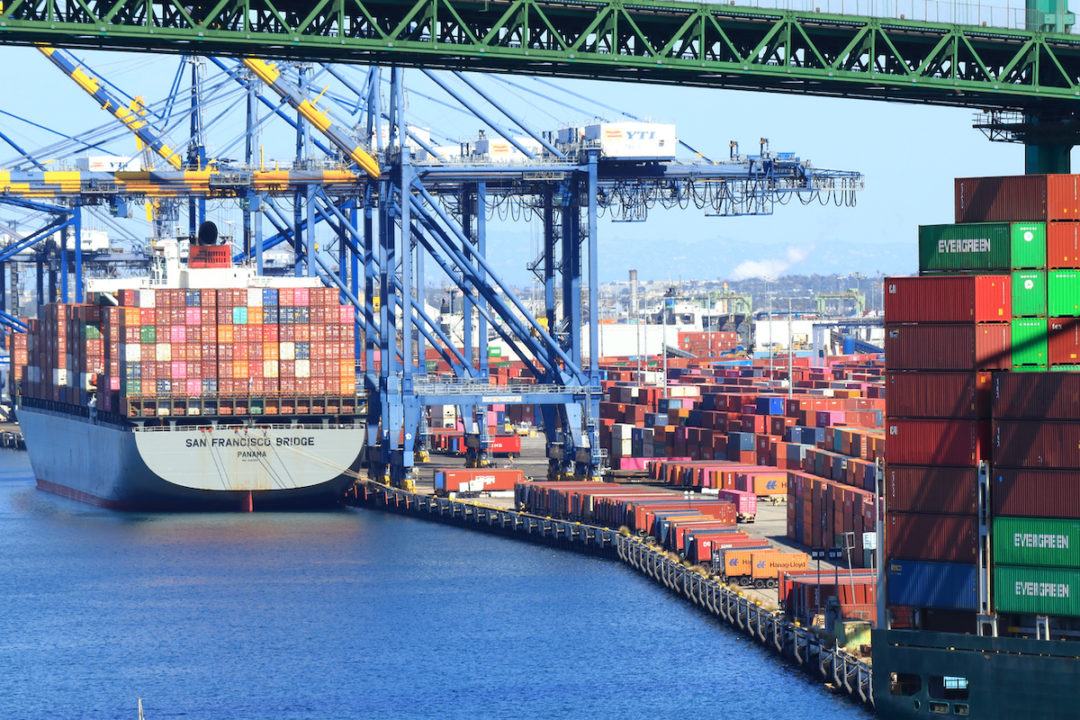
Why Congestion Could Be on the Horizon for Port of L.A. Headed into Peak Months
A March 18 briefing from the Port of Los Angeles offered a rosy picture of volumes and capacity at the critical gateway in recent months. But a potentially perfect storm of geopolitical and economic factors could lead to problems come spring and summer.
Already in 2024, the port has moved around 1.6 million 20-foot equivalent units (TEUs), a 35% increase over the same period last year. With port terminals operating at 75% to 80% capacity, "market confidence in our gateway is as strong as it's ever been," executive director Gene Seroka said in the March briefing.
Despite that level of confidence, Bryn Heimbeck, co-founder and president of global logistics platform Trade Tech, believes the port should anticipate larger volumes by April and May, before picking up even more in June, July and August. Market-driven increases in volume are likely to be exacerbated by the crisis at the Panama Canal that severely limited volumes in the vital shipping lane. And, with that, comes the threat of congestion.
"Unfortunately, the Panama Canal is at a fraction of its capacity," Heimbeck says, citing the canal's traffic jams fueled by drought.
With U.S. economic growth of more than 3% a year, and an unemployment rate hovering under 4%, "we're living in a significant economic period," Heimbeck says. "And that means more consumption," where consumers are able to buy more products sourced in Asia, which are moved through West Coast ports.
Combined with a years-long pushback against automation that could potentially increase throughput from union dockworkers at the ports of Los Angeles and Long Beach, those factors could add up to trouble for the shipping hub.
"I don't think you have to be a genius to think we're going to get to congestion," Heimbeck says.
The port is already experiencing longer-than-usual container dwell times at rail transfer facilities, averaging between five and eight days as of March 15 (the target is usually two to four days). And while the port says it has "the infrastructure, labor force, analytics and capabilities to handle additional cargo," it doesn't arrange offloaded container stacks to account for when trucks will be arriving to pick up their cargo, Heimbeck points out.
"The real problem with the current processes is that the terminal doesn't know when the container's going to leave," he says. "If you don't know, then you can't plan; if you can't plan, you're stuck digging for the container that a trucker comes to get." As volume ramps up, that could leave a line of trucks waiting at the terminal gate.
Short of quickly enacting infrastructure modifications that allow for planned stacks ahead of the spring and summer months, Heimbeck offers a relatively simple solution for carriers, should the port struggle with congestion: pivoting to the Pacific Northwest.
"People just so rarely think of the PNW/Seattle-Tacoma as an alternative," he says. "Their volumes are actually down, and you've got the rail infrastructure to service virtually everywhere."
So far in 2024, the Northwest Seaport Alliance is reporting average terminal dwell times of two and a half days at the ports of Seattle and Tacoma.
"This means that shippers can save time using our terminals in the event the supply chain becomes strained along the West Coast," NWSA spokesperson Melanie Stambaugh says.
She adds that the Port of Seattle is in the final stages of opening a second berth at its Terminal 5, which would provide even more cargo-handling capabilities.
Meanwhile, the Port of Los Angeles remains confident about the current state of affairs.
"All of our vital statistics are in good shape," Seroka says. "If issues do arise, we will help our supply chain partners in addressing them.
"As we learned during the COVID-19 pandemic, it is critical that we keep Port of Los Angeles docks fluid," he adds. "The port can’t be used as a warehouse. Cargo must be discharged from vessels and moved out swiftly."
